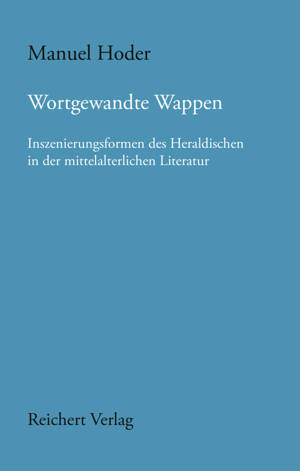
- Afhalen na 1 uur in een winkel met voorraad
- Gratis thuislevering in België vanaf € 30
- Ruim aanbod met 7 miljoen producten
- Afhalen na 1 uur in een winkel met voorraad
- Gratis thuislevering in België vanaf € 30
- Ruim aanbod met 7 miljoen producten
Zoeken
Wortgewandte Wappen
Inszenierungsformen Des Heraldischen in Der Mittelalterlichen Literatur
Manuel Hoder
€ 131,95
+ 263 punten
Omschrijving
Heraldic signs, which have become ornamental remnants of our cultural heritage, retain a striking presence that gestures toward their former symbolic and discursive power. Coats of arms have also found their way into literature, yet their poetic potential remains underexplored. From the perspective of history and auxiliary disciplines, heraldry has often been reduced to identificatory or representative functions, and has been marginalized as mere decorative motifs in literary studies. Challenging both perspectives, this study uncovers the aesthetic and narrative capacities of heraldic signs in medieval European literature (1170-1300). Grounded in an interdisciplinary dialogue between literary studies, history, and auxiliary disciplines, the book contributes to a cultural-theoretical reappraisal of heraldry. It adopts a cultural-anthropological perspective to investigate heraldry as a communicative code central to the formation of courtly society and literature. Methodologically, the study develops a cultural-semiotic and discourse-analytical approach, viewing coats of arms as a sign system that encodes culturally and temporally specific meanings. Within this 'heraldic code, ' historical knowledge systems and patterns of thought-particularly of knightly-courtly culture-are represented, negotiated, and reimagined in literary texts. The study is divided into two main parts. The first, "Wappen erzahlen," examines modes of staging the heraldic code across German, English, French, and Latin sources, focusing on poetics, identity, symbolism, intertextuality, and discursive contexts such as love, religion, and politics. The second part, "Wappen erlesen," offers a diachronic analysis of three distinct heraldic poetics, enabling a sketch of a 'heraldic literary history': the Middle High German Prose Lancelot and its Old French sources; Konrad von Wurzburg's Turnier von Nantes in the context of Old French tournament poetry; and Ulrich von Etzenbach's Wilhalm von Wenden, composed at the Bohemian royal court.
Specificaties
Betrokkenen
- Auteur(s):
- Uitgeverij:
Inhoud
- Aantal bladzijden:
- 588
- Taal:
- Duits
- Reeks:
Eigenschappen
- Productcode (EAN):
- 9783752008456
- Verschijningsdatum:
- 11/06/2025
- Uitvoering:
- Hardcover
- Formaat:
- Genaaid
- Afmetingen:
- 155 mm x 230 mm
- Gewicht:
- 235 g

Alleen bij Standaard Boekhandel
+ 263 punten op je klantenkaart van Standaard Boekhandel
Beoordelingen
We publiceren alleen reviews die voldoen aan de voorwaarden voor reviews. Bekijk onze voorwaarden voor reviews.








